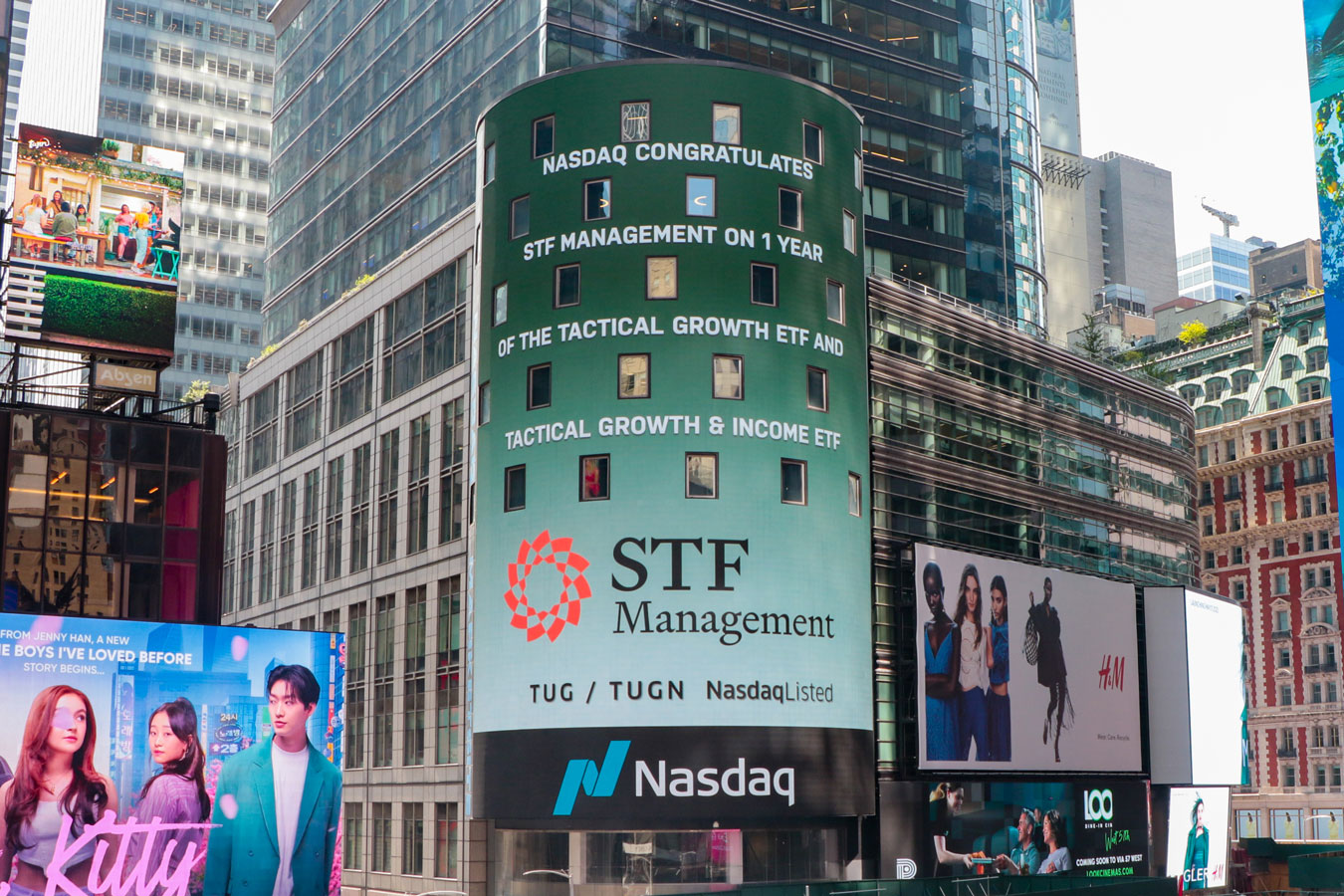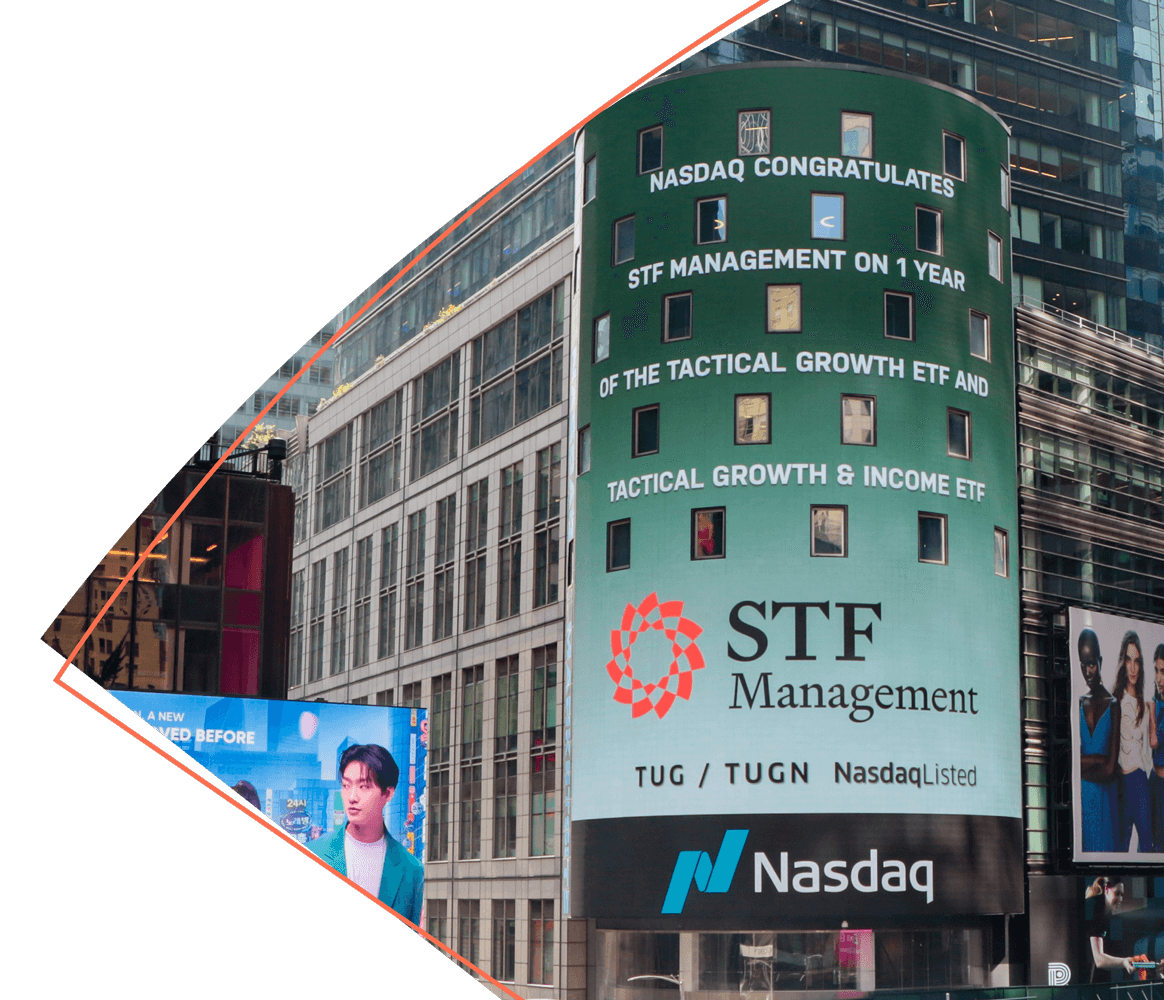Simple. Transparent. Focused. Investments®


NASDAQ Trade Talks with Jill Malandrino
The challenges associated with asset allocation

Why invest with STF?
- Adapt to changing market conditions
- Equity exposure with less volatility
- Rules-based risk management
- Navigate short-term market environments
- Invest without emotion
STF Tactical Growth ETF (TUG)
Asset allocation–solved
An active, rules-based approach to navigating short-term market environments while still adhering to long-term investment objectives.

STF Tactical Growth & Income ETF (TUGN)
Growth & income
TUGN’s strategy seeks to solve the challenges of asset allocation while offering the opportunity to generate current income.

Important Information
Opinions expressed are subject to change at any time, are not guaranteed and should not be considered investment advice.
Investing involves risk, including possible loss of principal.
TUGN expects to pay out dividends, if any, on a monthly basis. TUG expects to pay out dividends, if any, at least annually. Dividends are not guaranteed.
Cash Redemption Risk. The Fund’s investment strategy may, at times, require it to redeem shares for cash or to otherwise include cash as part of its redemption proceeds. In that case, the Fund may be required to sell or unwind portfolio investments to obtain the cash needed, which may cause the Fund to recognize a capital gain that it might not have recognized if it had made a redemption in kind. Derivatives (Options) Risk. The Fund invests in options that derive their performance from that of the Nasdaq-100 Index. Derivatives may be more sensitive to changes in market conditions and may amplify risks. Selling and buying options are speculative activities and entail greater than ordinary investment risks. Fixed income Risk. Fixed income investments are subject to changes in governmental policy and market conditions, which may cause such investments to be subject to significant volatility and reduced liquidity, depending on the environment. Fixed Income – Call Risk. During periods of falling interest rates, an issue of a callable bond held by the Fund may call or repay the security before maturity, causing the Fund to reinvest proceeds at a lower interest rate. Fixed Income – Credit Risk. Debt issuers and other counterparties may not honor their obligations or have their debt downgraded by ratings agencies. Fixed Income – Extension Risk. During periods of rising interest rates, certain debt obligations will be paid off more slowly than anticipated, causing the value of those securities to fall. This may result in a decline in the Fund’s income and potential the value of the Fund’s investments. Fixed Income – Interest Rate Risk. Rising interest rates may cause the value of fixed-income securities held by the Fund to decline. Large-Capitalization Investing Risk. The securities or large capitalization companies may be relatively mature compared to smaller companies and therefore subject to slower growth during times of economic expansion. Management Risk. The Fund is actively managed and may not meet its investment objective based on the Adviser’s success or failure in implementing the Fund’s strategy. Models and Data Risk. When models and data prove to be incorrect or incomplete, decisions made based on them can expose the Fund to potential risks. Non-Diversification Risk. Because the Fund is “non-diversified,” it may invest a greater percentage of its assets in securities of a single issuer or fewer issuers than a diversified fund, which may expose the Fund to the risks associated with the developments affecting the issuers in which the Fund invests. Other Investment Company Risk. By investing in another investment company, including ETFs, the Fund becomes a shareholder of that investment company and bears its proportionate share of the fees and expenses of that investment company. In addition, the Fund is also subject to the principal risks of the investment companies in which it invests. U.S. Treasury Obligations Risk. Changes to the financial condition or credit rating of the U.S. government may cause the value of the Fund’s U.S. Treasury obligations to decline.
STF Management, LP serves as the Fund’s investment adviser.
The Fund is distributed by Foreside Fund Services, LLC. For more information, please call 1-866-590-9112